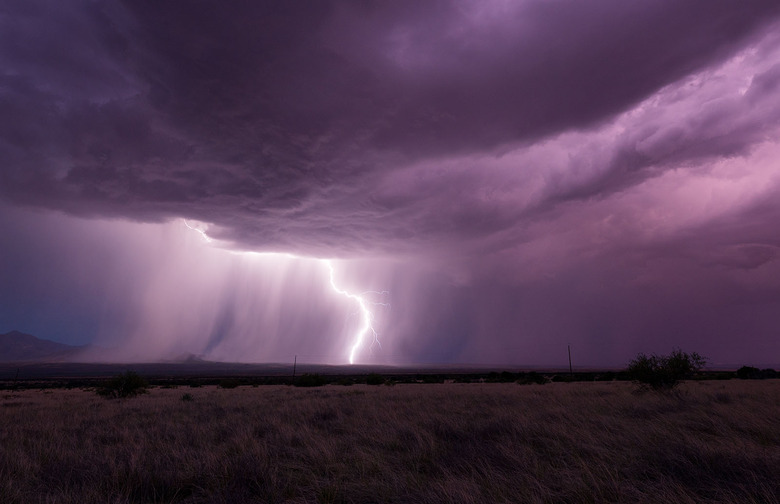Stunning Photos Show Rare Upside-Down Lightning Streaking Up Into The Sky
A photographer based out of Puerto Rico has captured stunning images of upside-down lightning created by the storm event that eventually escalated into Hurricane Franklin. The rare phenomenon flashed across the sky, and Frankie Lucena was just fast enough to grab photographs, capturing it before it could fade away completely.
This phenomenon is more commonly known as gigantic jets, and they form when upward-moving lightning bolts, which are the rarest and most powerful type of lightning, crack across the sky. Scientists say these events happen as few as 1,000 times a year and pack more than 50 times the power of a traditional lightning bolt like the one seen at the top of the article.
The upside-down lightning bolts are capable of reaching upwards of more than 50 miles above Earth's surface. That means these bolts often touch the bottom of the ionosphere, releasing their electric charge into a vast layer of electrically charged particles. It's a fascinating phenomenon, and seeing it captured in photographs is almost surreal. Lucena also shared a video of the event on his YouTube.
Frankie Lucena shared his photographs on Flickr, where you can view the full resolution of the images yourself for a good look at what upside-down lightning looks like. While these rare gigantic jets are not a familiar sight, they are most frequently reported in tropical areas, a study published in Science Advances explains.
But this is a natural phenomenon that we have only known about for 20 years, so the information we have on them is still young, and scientists will undoubtedly discover more as they can study these beautiful and surprising events more. In the past, we've seen record-breaking lightning storms come from other natural disasters, too.
It's possible we'll see more photographs of this strange phenomenon as we move into hurricane season, and see more storms like Hurricane Franklin forming over the oceans. Unfortunately, these beautiful sights don't negate the damage done by these storms, especially if they make landfall in densely populated areas.
